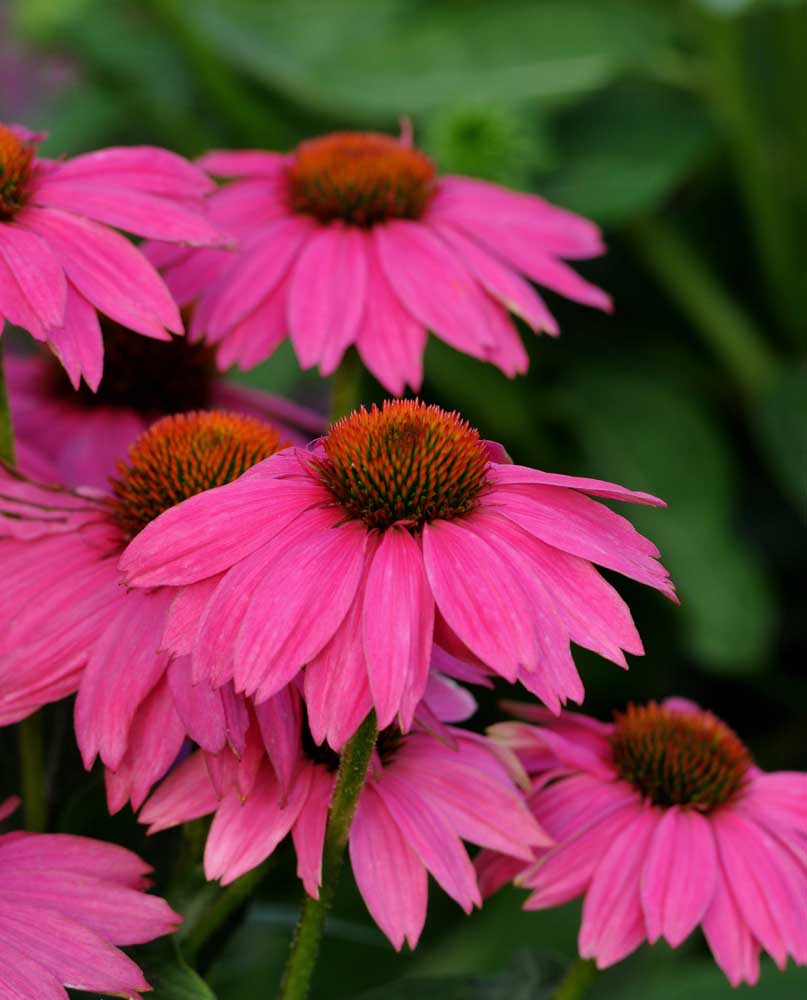Attract bees, butterflies
Published 12:00 am Tuesday, May 6, 2014

- PowWow Wild Berry echinacea offers vivid color.
My gardening to-do list seems to grow longer instead of shorter. I know which vegetables I am going to plant and, following my rotation schedule, where they will be planted this year.
Now I’m working out a plan to lure in more pollinators. I recently read that 70 to 75 percent of the world’s flowering plants and over one-third of the world’s crop species depend on pollination for reproduction. I think it is a responsibility of home gardeners to do what they can to help provide habitats for pollinators.
“The importance of bees, butterflies, hummingbirds, moths and other pollinators has become more prominent as honey bee hives are affected by ‘colony collapse disorder’ and other ailments,” according to Gail Langellotto, Oregon State University horticulturist and statewide coordinator of the Master Gardener program.
“Pollinating insects and birds are vital players in sustaining plant growth on Earth, and with about 19,200 species, the bee is the most important pollinator.
“The entire body of this tiny buzzing sensation is designed to pollinate. Body hairs and back-leg baskets carry pollen from male to female flower parts. With long-tongued species and short-tongued species, bees gather sweet nectar from both tubular and ray-like flowers to renew their energy. Even the bee’s buzz helps pollinate; it agitates flowers to release their pollen through a process called sonication.”
I remember the first time I saw the results of a leafcutter’s handiwork, or should I say mandiblework. I was totally awed by the precise cutting of the semicircular sections of the leaves. But at the same time, I felt angry at the mangy look of the plant. I felt better after reading up on leafcutter bees.
I learned it is the female who does the cutting, and she uses the pieces to create cells in which to place her eggs. Now who could be upset with a mother making a place to procreate? Leafcutters are solitary bees that do not produce colonies. Their nests are usually excavated out of soft, rotten wood or the pith of plants. The nests can also occur in existing holes of the proper size in clay banks or stone walls.
Leafcutters don’t have pollen sacs the way bumblebees do; rather they have pollen-gathering hairs called scopa covering the underside of their abdomens. Only the females have these hairs. All leafcutter bees have long tongues for gathering nectar, which means you are most apt to find them on tubular type flowers.
In thinking of pollinators, butterflies aren’t the first that come to mind. According to a friend, the swallowtail butterflies, which are the official Oregon state insect as declared by the legislature in 1979, cover her echinacea patch when it starts blooming. Clumped plantings seem to be more attractive to pollinators than scattered individual flowers. If possible, choose native plants to attract more native pollinators. Adding a patch of flowers here and there in the vegetable garden helps to ensure that you will be rewarded with produce.
Providing a habitat where nesting and egg-laying can take place — such as shrubs, tall grasses, low growing plants and patches of fallen branches — is important. I know for some gardeners everything has to be neat and tidy, but try to relax just a little.
A water source should also be considered. Butterflies will gather and sip at shallow pools, mud puddles and saucers filled with water. Adult male butterflies will gather to suck mineral salts from mud puddles. Bees and wasps will use the mud as building material.
Color is important in attracting pollinators. Hummingbirds are drawn to tubular flowers in reds and oranges: My honeysuckle is a regular Highway 97 when it starts to bloom. Night-flying pollinators, such as moths, are attracted to pale flowers that reflect the moon. Flowers with single petals provide easy access to their pollen and nectar. Bees prefer flowers that are blue, purple, white or yellow.
To keep the pollinators, it is important to have blooms throughout the seasons, especially in early spring when native bees emerge and fly. Spring blooming trees and shrubs are especially valuable at this time.
A request from the U.S. Fish & Wildlife Service website is to avoid or limit pesticide use; expect and accept a little bit of pest activity. If you must use a pesticide, choose one that is the least toxic and does not persist on vegetation, and apply it in the evening when most pollinators are not as active.
— Reporter: douville@bendbroadband.com






